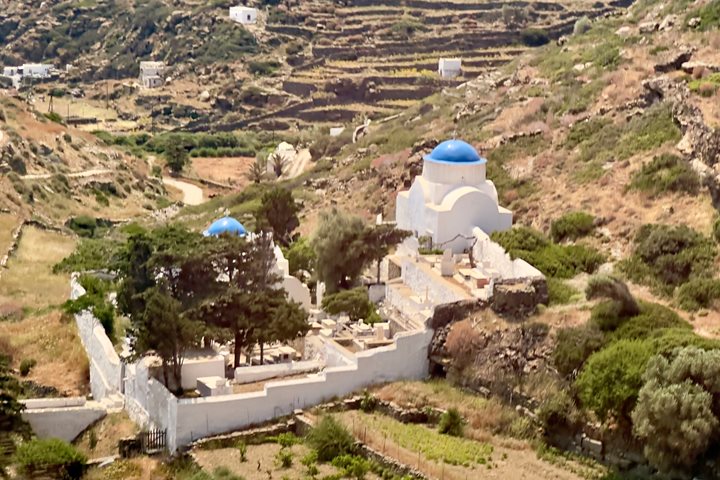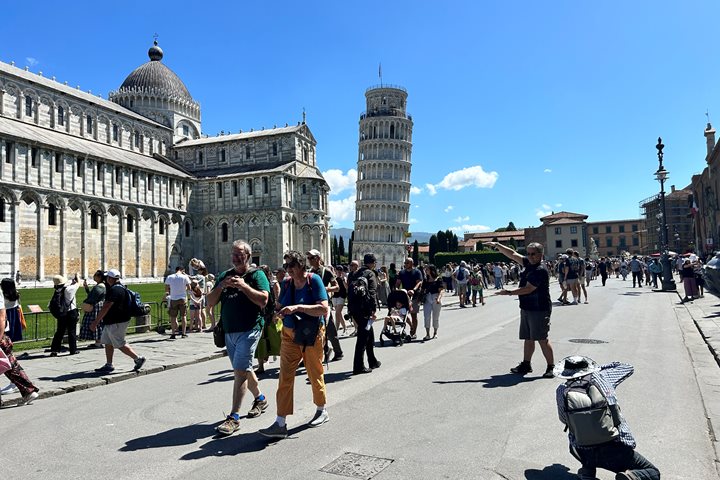We docked in Port Empedocle, named after the great Greek pre-Socratic philosopher, and could see the line of extraordinary temples in Agrigento awaiting our visit. This part of Sicily from the mid-5th century BC was settled by Greeks and called Magna Graecia. The temples are all deliberately situated on a ridge, which allowed the ancient Greeks to vaunt their wealth and artistic skill. Originally, there may have been nine temples dedicated to the Olympian Gods. We began our visit at the temple of Hera, Zeus’s consort. This temple is in the severe Doric style and dates from between 450-430 BC. The site was continually inhabited until the 14th century. The Byzantines built their cemeteries in vaults hollowed out of the ancient walls. The Temple Concordia is the best preserved of the temples and is also in the Doric style. It dates from the mid-5th century and was converted by Christians in the 6th century and renamed the Church of Saints Peter and Paul. Its conversion to a church likely contributed to its excellent state of preservation.
6/2/2025
Read
National Geographic Orion
Sifnos, Greece
The Cycladean island of Sifnos is one of those rare and special places that seem to embody the essential nature of some beautiful ideal, in this case that of the quintessential Greek island rising from the blue Aegean. Steep cliffs of sparkling schist embrace quiet harbors, while tucked into the hills above are many small villages of brilliantly whitewashed buildings and tiny blue-domed churches. As is the case with the Church of the Seven Martyrs, which we visited this morning, these are often built on rocky promontories, accessible only by long steep staircases that climb the cliffs behind them. Bright bougainvillea, shady little cafés, friendly Greek shopkeepers and the cats basking in the sun everywhere you look make this lovely island exactly what travelers to Greece see in their imaginations when dreaming of the journey to come.






